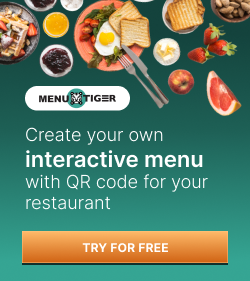QR Code Optimization: Here’s How to Make Sure You Get Scans

QR code optimization is important when using QR codes in your campaigns so you get scans and successfully target your audience.
That being said, there are certain things that you need to consider to get traction for your QR code.
You need to determine the correct size of your QR code, if it's customized according to your brand, if your placement is right, the materials you used, etc.
Many factors will play an important role in making your QR code marketing a success.
Explore the best practices for optimizing your QR codes, the factors that affect optimization, and the tools and resources you need to get started.
- Why should I optimize QR codes?
- Things to consider when making optimized QR codes that get scans: Before, during, and after QR code creation
- QR code optimization: Factors you should consider (In summary)
- How optimized QR codes can enhance your marketing strategy
- How to create optimized QR codes using a QR code generator
- Create effective and efficient QR codes with QR TIGER
Why should I optimize QR codes?

QR codes of poor quality can reduce the likelihood of users taking your desired action, defeating the purpose of your campaign.
But when you optimize your QR codes, you can guarantee they are user-friendly and help you achieve your business goals.
Here are three key reasons why optimizing your QR codes is essential:
Faster scanning
Users expect a quick and seamless experience when they scan a QR code.
However, if the code is too small or blurry, it may take time for their device to recognize the code, and it can lead to user frustration and abandonment.
Optimizing your QR code size, resolution, and contrast can make them faster to scan, ensuring a smoother user experience and reducing the risk of losing potential sales.
Higher conversion rates
The ultimate goal of QR code optimization is to drive conversions from scanners.
Optimized QR codes can increase the likelihood of users taking the desired action, such as signing up or purchasing a product.
A well-placed and visually appealing QR code can catch users’ attention and encourage them to scan it.
But you must also optimize its landing page to guarantee its efficiency even more.
An optimized landing page or mobile site can provide a seamless user experience, prompting the user to complete the desired action.
Better readability
Scanning devices can easily read QR codes, but certain factors can reduce their readability.
For example, a QR code with low color contrast, a complex background, or an incorrect error correction level can complicate the scanner’s reading.
Optimizing your QR codes for readability ensures they are easily scannable in various conditions, such as in low light or from a distance.
Things to consider when making optimized QR codes that get scans: Before, during, and after QR code creation
Have you ever wondered why some businesses rant about how their QR code isn’t getting enough leads or isn’t functioning the way they want it to?
This is because they are probably generating their QR codes the wrong way!
Using digital tools in your marketing campaigns requires a keen eye for detail.
Following these points to create an effective QR code marketing strategy that generates scans:
Before deploying your QR code in marketing materials
There are certain things you need to remember and do first thing before placing your QR codes on marketing materials.
1. Think and pick a QR code solution suitable for your marketing campaign
Several high-functioning QR code solutions await you using a free QR code generator with a logo.
Each solution has its own unique features that are capable of elevating your tech-driven marketing campaign.
2. Establish an engaging and informative landing page

Another problem with how QR codes don’t usually get the expected leads is that landing pages aren’t mobile-friendly.
QR scanners, if not all, are mostly from smartphone devices, and when your web page or content embedded in your marketing QR code is not mobile-friendly, who would still like to scan it, right?
During the creation of your QR code marketing campaigns
Remember these expert tips when you’re generating a QR code for marketing campaigns:
1. Generate a dynamic QR code
A dynamic QR code has numerous features perfect for any business-related endeavor.
You can edit/update the content and URL, track the scans, retarget and remarket, integrate google analytics, feature google tag manager, set a password, notify you via email, and many more.
2. Add a call-to-action (CTA) on your QR code to encourage customers to scan

Call-to-action (CTA) encourages your target audience to take action with your QR code.
CTAs should be short yet interesting.
It should give out a sense of motivation or encouragement to take that phone out of your pocket and scan your QR code.
3. Make a branded QR code for easy brand recognition with customization options
Use the advanced customization features of a QR code generator to do away from the old-school black-and-white appearance.
Design them per your brand image or service provided, and you’ll certainly get more scans than a regular QR code.
This professional strategy increases your conversion rate and helps your customers better recognize your QR code simply because it has your logo.
4. Avoid creating inverted QR codes
One of the most common mistakes when generating a QR code is inverting the colors.
When customizing your codes, remember that QR codes should always be darker than the background, as this makes the code easily scanned.
5. Test the code before clicking the download button
Performing a test scan for your QR code allows you to recognize errors before you can download and deploy them on marketing materials.
6. Choose the SVG format when downloading your QR codes
Using the SVG image format gives you the power to resize or adjust your QR code without compromising its quality.
After QR code creation: Deploying QR codes on marketing materials
Before you proceed with placing the QR code marketing campaign on your promotional materials, be sure to take heed of the following:
1. Consider the right size of the QR code
Again, the ideal size of the QR code depends upon your medium.
For instance, you can’t use the same QR code size you posted on your web page on a bottle cap, right?
Also, the QR code you used on the bottle cap cannot be used on a bigger poster, flyer, or landing page.
And if you’ve been following this practice, insufficient may downgrade the image quality – resulting in hindering the scanning process.
2. Check the quality of the QR code image
Make sure that the QR codes are not pixelated or blurry, as this will definitely affect their scannability.
Bad-quality QR codes are a nuisance to your marketing as this will affect the user experience and the feedback you get from your customers.
3. Examine the materials before printing the QR code in bulk
Before printing bulk QR codes, be sure that the surfaces are not tampered with and are perfectly clean.
Generating QR codes in large volumes and strategically placing them on substandard materials could possibly cause a loss in profit.
See to it that both the QR codes and the materials are of great quality before deploying them to the public.
4. Secure that QR code placement is at eye-level

For instance, a QR code should be big and visible enough to grab the audience’s attention on a poster.
The most common are QR codes in product packaging.
When added to your packaging, QR codes can come in handy.
You can embed your website as a landing page if buyers scan the QR code found in your packaging.
This can make your customers well-acquainted with your brand or product.
You can redirect them to extensive details about what they bought, to a customer service platform where they can give feedback and report problems, or to informational videos and content about your business.
The possibilities are endless when adding marketing QR codes to your packaging.
QR code optimization: Factors you should consider (In summary)
Several factors can impact the QR code optimization.
You must choose the right QR code generator to create high-quality QR codes.
Understanding these factors is crucial for optimizing your QR code for maximum performance and effectiveness.
It’s also important to mind the best practices for optimizing QR codes to achieve your marketing goals. Here are some key factors to consider:
1. Static vs dynamic QR codes
There are two types of QR codes: static and dynamic.
Choosing between these two types is an essential factor to consider when optimizing a QR code campaign.
Static QR codes embed the information directly into their pattern.
That’s why it’s permanent once you generate it.
They are ideal for storing data that doesn’t require frequent updates, such as company websites and product information.
On the other hand, users can edit the contents of a dynamic QR code even after downloading it.
They are suitable for data that require regular updates, such as event schedules, promotional offers, or inventory information.
Dynamic QR codes allow flexibility and real-time changes because it stores a short URL to their patterns instead of the actual content.
The pattern will also remain optimized despite the data size.
Related: Static vs Dynamic QR Code: Their Pros and Cons
2. QR code size
The size of a QR code can affect its scannability; smaller codes may be more difficult for scanners to read.
Optimizing the size of your QR code based on its intended use and placement can improve its overall performance.
For example, a QR code placed on a billboard may need to be larger than the code placed on a business card.
QR codes should be large enough but not so large that they become difficult to incorporate into your marketing materials.
The minimum size for a QR code is 1.2 x 1.2 in, and the resolution should be at least 300 DPI to ensure that scanners can read it.
3. QR code resolution
Your QR code image should have a high resolution to guarantee its quality, which is important to ensure your QR code’s readability.
If the image is blurry or only has low pixels, scanners may find it difficult to recognize and read your QR code.
But here’s the catch: high-resolution images often have bigger file sizes, which may take time to import or upload on photo editing software.
You need to ensure that your QR code image has enough resolution to maintain its readability and optimize its file size.
4. Color contrast
The color contrast between the QR code’s pattern and background can also impact scannability.
High-contrast colors, such as black and white, are generally recommended for QR codes to make them more readable.
Always use a different color for your pattern and background to create contrast.
The background should be light, while the pattern should be dark. Never invert these two.
5. Error correction level
Thanks to their error correction feature, QR codes can withstand damage and wear and tear.
Different QR code error correction levels add backup data to the QR code’s pattern.
A higher error correction level can make a code more congested but safer from surface damage.
The error correction level should depend on the QR code’s placement. QR codes placed on street signs and billboards may require a higher error correction than in magazines and flyers.
6. QR code placement
Did you know that finding a spot to place your QR code is also part of optimizing it?
The placement of a QR code can also impact its overall performance.
For instance, a QR code placed on a curved surface or in a poorly lit area may not get many scans since it’ll be harder for people to scan them.
7. Test your codes on multiple devices
QR codes can look different across various devices, so testing them on multiple device types is essential to ensure they are easily scannable.
You can use built-in scanners in your smartphone camera or third-party scanner apps.
8. Optimize the landing page
Remember: your target audience will scan the QR code with their smartphones.
Make sure your landing page is mobile-friendly so they can access it seamlessly.
9. Use QR codes in the proper context
QR codes are most effective when you use them in the proper context.
For example, use a QR code on a product label to provide users with more information about the product or on a poster to promote an event.
Make sure that the context is relevant to the code and that it provides added value to the user.
10. Track and analyze data
Tracking and analyzing data on your QR code’s engagement can help you optimize your QR codes.
It can help you identify areas for improvement and make data-driven decisions to improve your marketing performance.
How optimized QR codes can enhance your marketing strategy
QR codes can be a powerful tool for improving your marketing strategy.
Optimizing them can take their effectiveness to the next level.
Here are some ways that QR codes can boost your marketing efforts:
Improved tracking and analytics
By including QR codes in your marketing materials, you can track and analyze engagement data to gain insights into the effectiveness of your campaigns.
Optimizing your QR codes for scannability and ease of use can improve data accuracy and gather more valuable insights.
Increased engagement
QR codes can drive customer engagement and interaction with your brand.
Optimizing your codes for quick and easy scanning can encourage users to engage with your content and take action.
Expand your reach
Use QR codes to help expand your reach by allowing users to share your content with others easily.
You can enhance your QR codes for easy scanning on various devices, ensuring your content is accessible and shareable across a broad audience.
Enhanced customer experience
Provide customers with added value and an improved experience using QR codes.
According to MobileIron, 64% of consumers find QR codes more convenient than typing in information manually.
You can offer relevant and valuable content for users with instant access to information, discounts, and special promos.
Cost-effective marketing
QR codes are cost-effective digital marketing tools that you can use in various contexts, from print materials to digital channels.
Optimizing your codes can increase the ROI of your marketing efforts and reduce costs.
How to create optimized QR codes using a QR code generator
Creating optimized QR codes is a breeze when you use QR TIGER, the most advanced QR code software.
QR TIGER’s user-friendly interface makes it easy for users to customize the QR code’s design.
Here’s how you can create QR codes using QR TIGER:
1. Go to QR TIGER QR Code Generator
2. Choose the type of QR code you want to create and enter the information needed
3. Select Dynamic QR, then click Generate QR code
Switching to dynamic QR guarantees that your QR code’s pattern remains optimal despite your data size.
4. Customize your code
Choose from the most advanced customization tools to make your QR code fit your brand. Remember: use a light background and a dark-colored pattern to create contrast.
5. Run a test scan
Do a test scan before downloading your QR code. Check if the information is displayed correctly and the landing page loads without issues.
6. Download and use your code
You can download it in SVG to ensure a high-quality image format. Use the QR code on your marketing materials, products, or digital platforms to promote your brand or business.
Create effective and efficient QR codes with QR TIGER
With the growing market for QR code technology, it’s essential to stay ahead of the competition and use QR codes to their full potential.
Creating optimized, visually appealing, high-quality QR codes can efficiently deliver your desired message to your target audience.
Invest in QR code optimization and use this strategy to boost your marketing efforts and achieve your business goals.
Brands should understand the factors that affect the optimization of QR codes, implement the best practices, and use a professional QR code generator such as QR TIGER to guarantee quality and efficiency.
It offers various customization options, such as design templates and branding features. QR TIGER also provides high-quality codes that devices can quickly scan.
Go to QR TIGER and create your customized QR code today.








